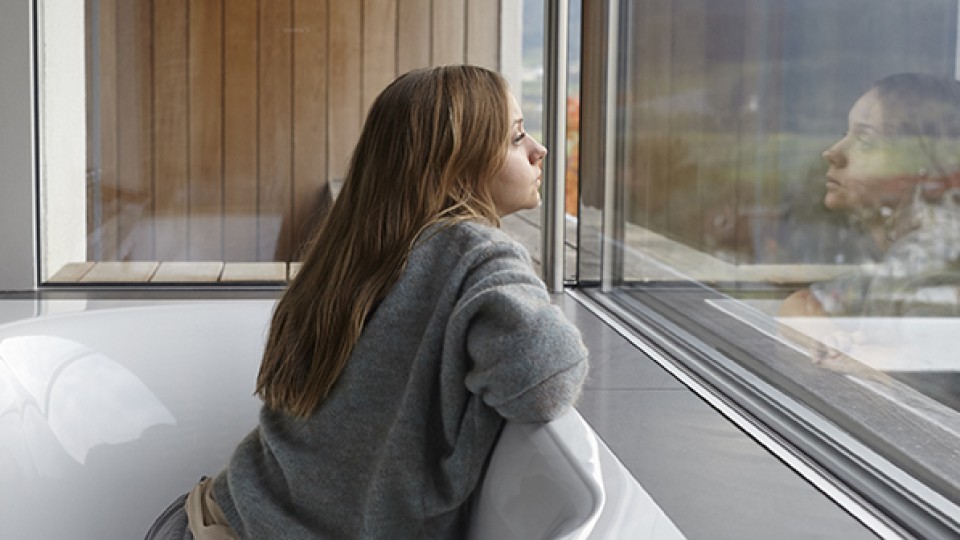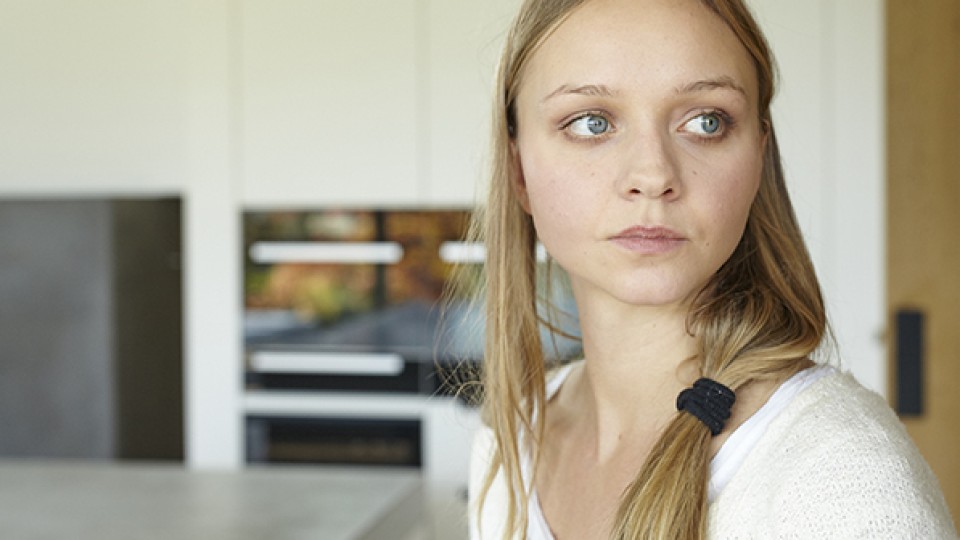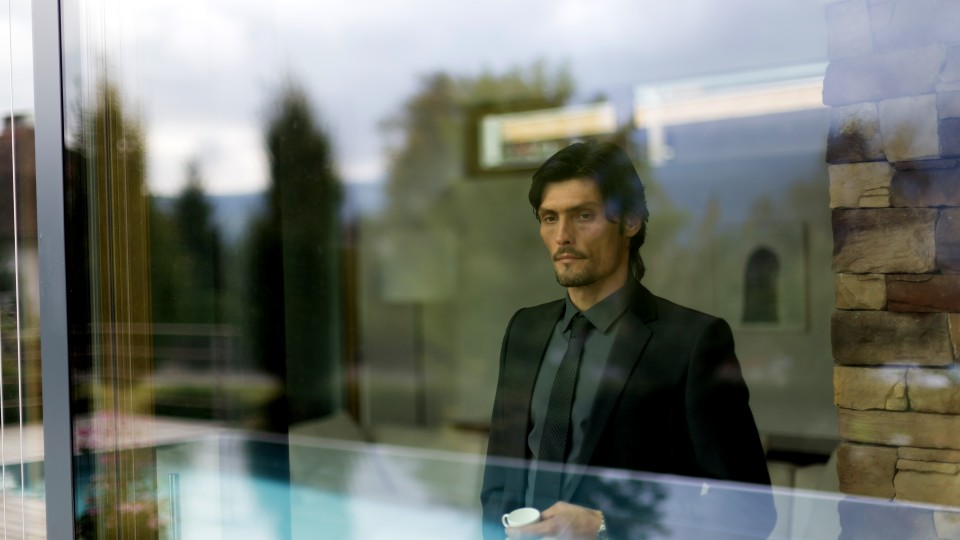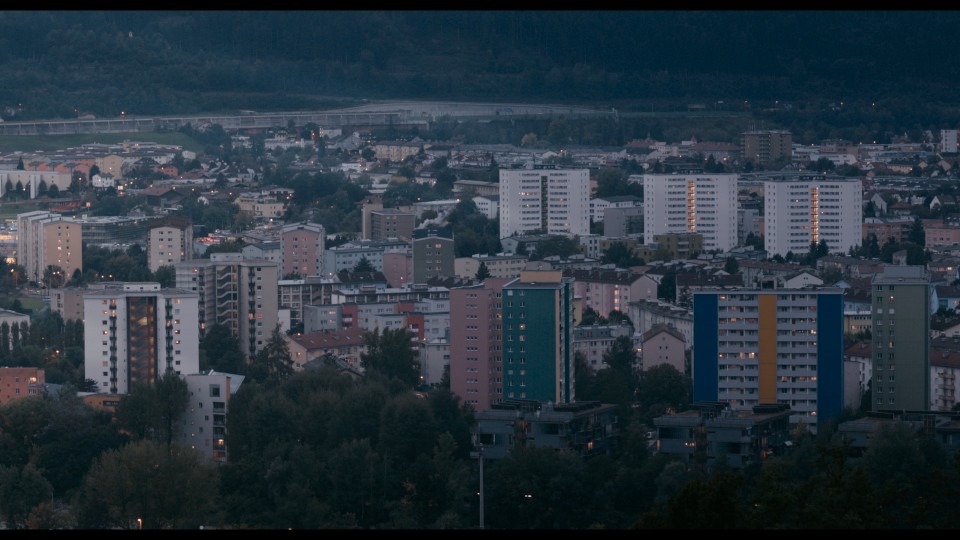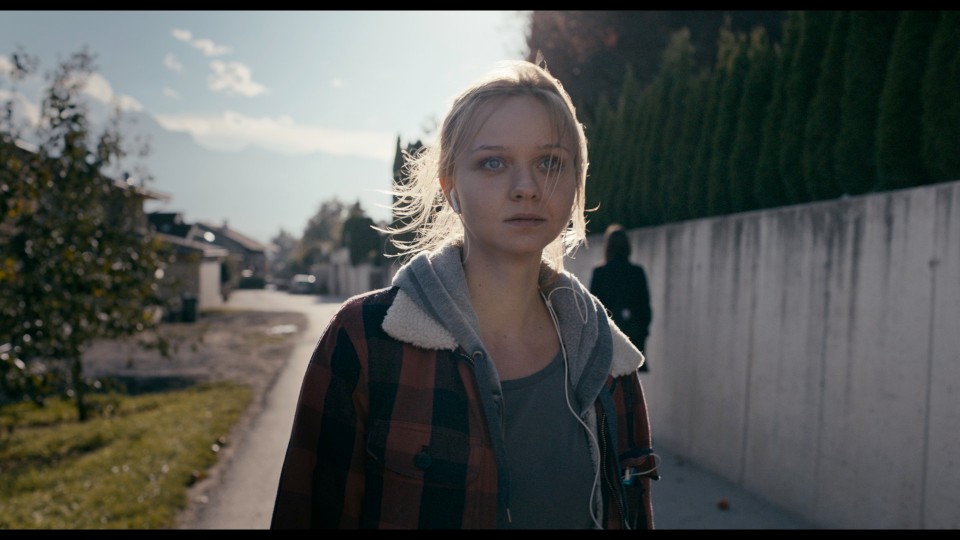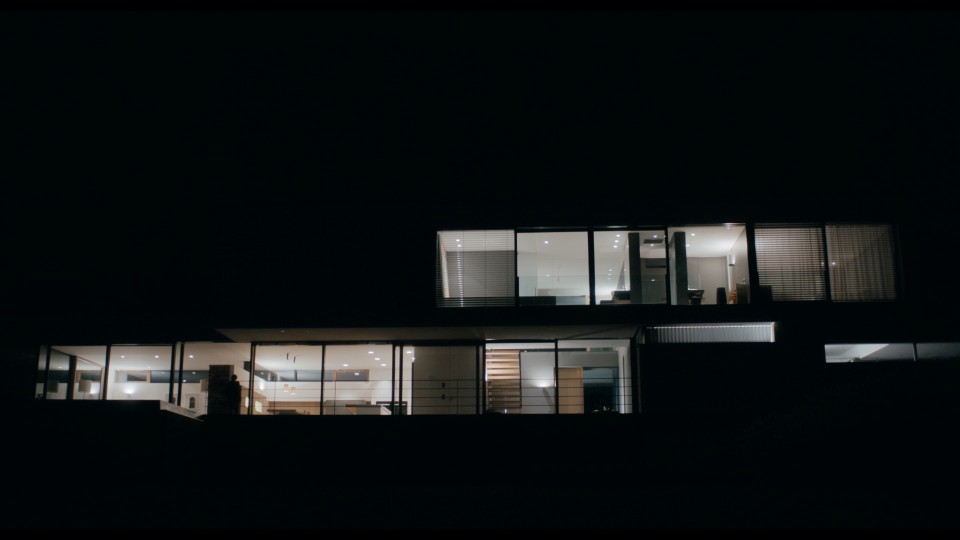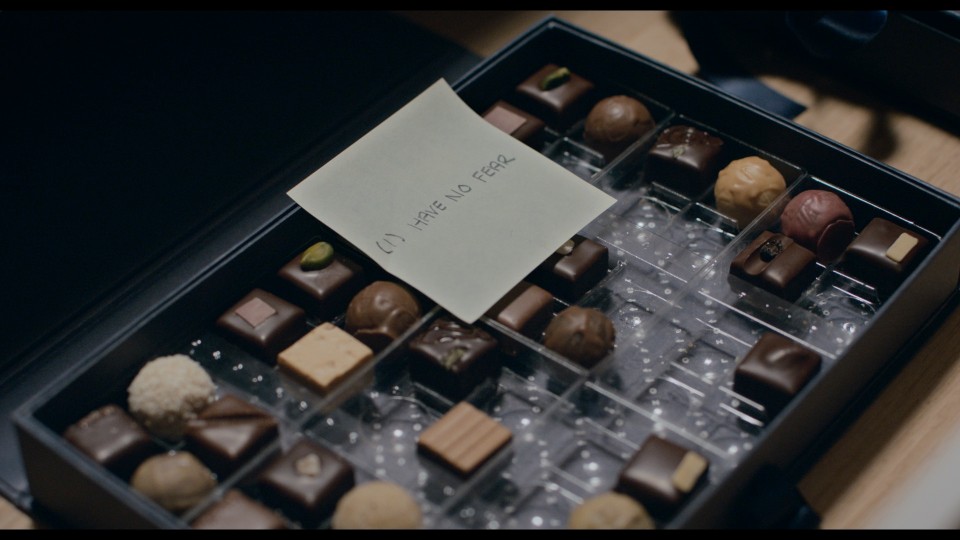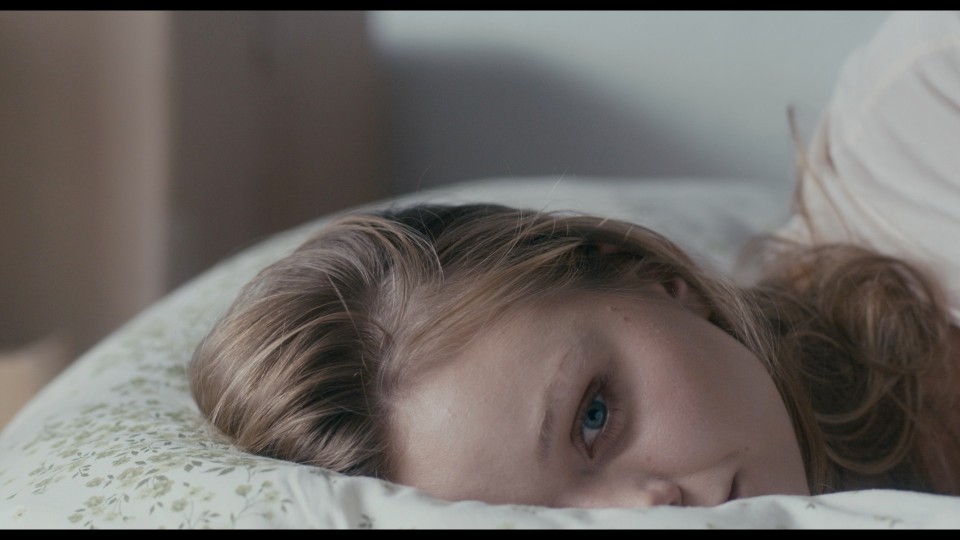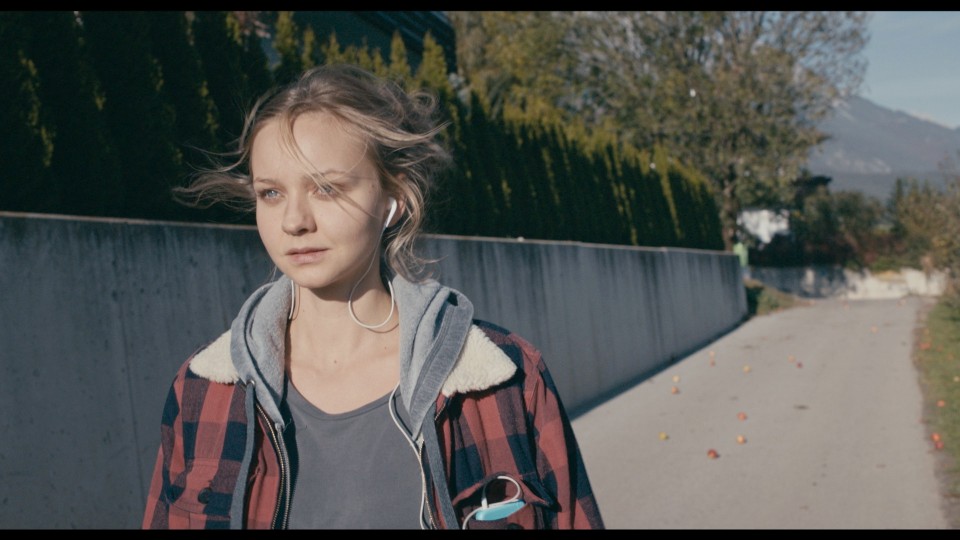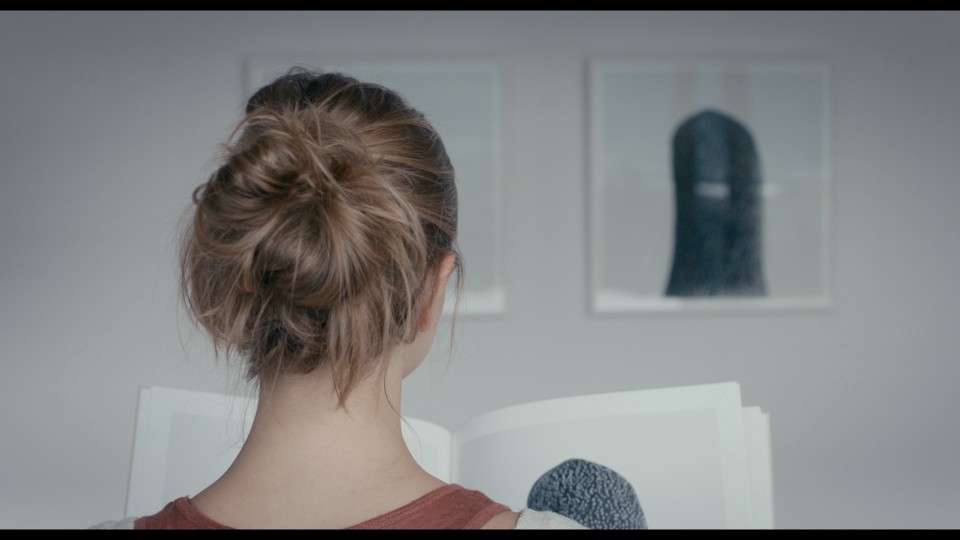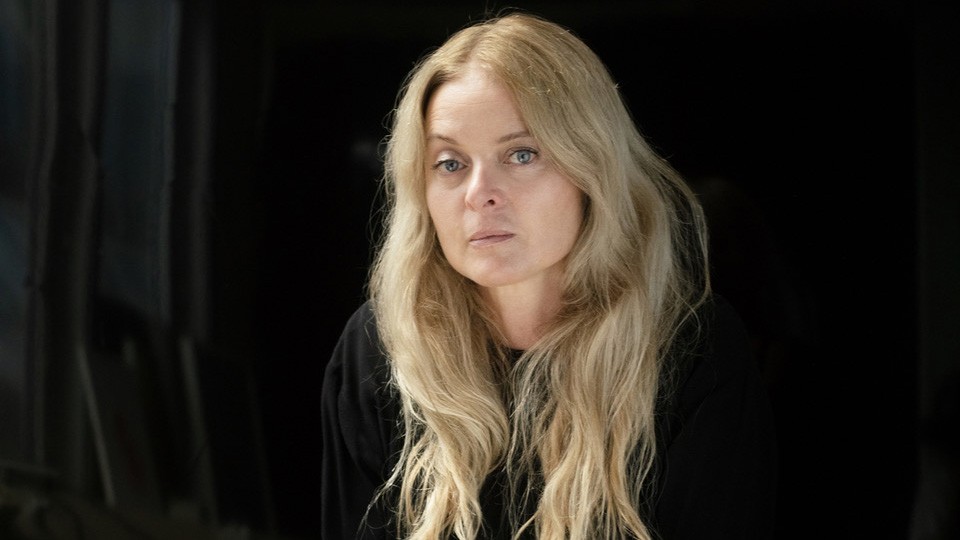In her debut feature film HOME IS HERE Tereza Kotyk examines the more or less unfathomable inner worlds of her protagonists, depicting people who are searching
for themselves and never encounter one another.
Do your two characters, Hannah and Max, convey two fundamental themes that are crucial for your artistic work and endeavours?
TEREZA KOTYK: That's certainly the case. These are issues that preoccupied me particularly during the period I spent in Innsbruck, but they
are also fundamental existential questions. I had lived in Vienna and Tyrol, and then I went to England and spent several
years there before returning to Innsbruck. That was a huge process of adjustment. I experienced a powerful feeling of solitude,
the sensation of being in a glass bell jar, but it also occurred to me that it was no different for the people around me.
I have the impression that “bell jar living” is dominant these days, and we engage in a lot of compensating activities so
we can avoid confronting the real questions that concern us. In Tyrol that evasion often involves sports, mountaineering in
particular. I'm interested in the question of whether somebody can retain individual integrity and how it’s possible to break
out of the bell jar. How can you follow your own path even when the pressure from outside is very strong? We women in particular
experience a great deal of pressure from all sides. But it isn't really much better for men. And I'm particularly interested
in language in this context. Is there any form of mutual communication within bell jar existence? I don't think there can
be. It's more like a ritualized form of language. People function, and this way of functioning brings with it a kind of speechlessness
and solitude. I chose extremely contrasting characters for this purpose: one of them is Max, who is conformist about his work
and dedicates himself to these external appearances by living in a wonderful house and spending his spare time on sports.
Hannah is the daughter of immigrants from former Czechoslovakia who are living in the Olympic Village, a place where the residents
of Innsbruck wouldn't live. There’s a kind of speechlessness dominating their lives as well: their mother tongue is no longer
a unifying element in precisely the place where it's really needed – within the family.
You have named four individuals who inspired you in the making of this film: Emily Dickinson, Roni Horn, Francesca Woodman
and Jean-François Billeter. Which sparks did these artists ignite in your work?
TEREZA KOTYK: Emily Dickinson, with her staccato poetry, has become famous as the inventor of a new linguistic form in English. She was
able to develop this language because from the age of 30 she withdrew completely into one house – her parental home. Her entire
artistic work was created in her bedroom and study, with a view from the window of the world outside consisting of trees and
vegetation all round. The photographic artist Roni Horn picked up this theme and created a wonderful tribute to Emily Dickinson
by photographing this view from her house. As a photographic artist Roni Horn had a decisive experience when she went to Iceland
for what was intended to be a short stay as part of a project and discovered that she had to let the place have its effect
on her for a while before she could confront it. She incorporated the weather as a benchmark, because it changes each day,
each hour, and in her work entitled Weather Reports You she confronts the question of how the external is bound up with the personal perspective. For 30 days she photographed a
woman every day in the same setting, and it's only when you look very closely that you realize how distinct each of the pictures
is. Every day we are different people. This definition of the individual self really fascinates me – in photography with Roni
Horn, in language with Dickinson. Jean-François Billeter studied Chinese philosophy in depth and clearly defined conscious
and unconscious gestures. He reflects on the subject of the internal division between what we describe as intention and what
drives us to act. In the preparatory work with Stipe Erceg the subject preoccupied me very intensely, since actors have to
be so extremely aware of every gesture and action.
The presence of Hannah’s mother as well – who appears to have left the former Czechoslovakia for political reasons – means
that two generations are represented in the film. To what extent do concepts like exile, internal exile and home vary for
these two women?
TEREZA KOTYK: The decision of her parents’ generation, that life in internal migration was no longer bearable and they had to leave the
country, is also transferred onto the daughter. As an artist, it's possible to live constantly in internal exile, or you take
the decision to step outside, which also means accepting the consequences. In Hannah's case it remains somewhat open, but
in the final analysis she comes to the conclusion that she didn't really need Max’s house, so in future she intends to pursue
her work anyway. A mechanism, a mode of action, is duplicated from one generation to the next.
The subject of duplication arises frequently in the numerous reflections which are a striking feature of the film’s visual
language.
TEREZA KOTYK: We constantly project on people, and my characters do exactly the same: the mother projects on the daughter, Max on the person
who breaks into his house, Paula on Max as an idealized figure she would so much like to live with. Our lives consist of constant
projections, although it's clear that we can’t rely on anyone but ourselves, and it makes more sense to strive for what we
really want. No projection can give me what I'm actually carrying around within myself, and nobody can fulfil my own expectations.
You have written almost silent roles for your actors. Their performances have to consist largely of body language and facial
expressions. How did you cast the film? How did you prepare your actors for the actual filming?
TEREZA KOTYK: I took acting lessons in England myself, and as well as wanting the cast to be international I was determined to have someone
with an English dramatic background, because the craft is taught differently there than in Germany. There you learn to a greater
extent to convey character as effectively without dialogue as with dialogue. When I was looking for actors I first came across
Anna Aström, who had also worked in England. Then it became difficult to find the corresponding male figure, because in HOME
IS HERE the possibility of attraction between Max and Hannah – who never actually meet – has to be plausible, and it has to
be maintained throughout the film. When I decided after all to consider a German-speaking actor I met Stipe Erceg in Berlin,
and it turned out that he was also represented by Anna Aström's English agency. He is a powerful character, and he can also
act well in this pared-down style. I wasn't entirely aware how difficult it would be for the actors to portray my characters
until I started working with them. And it was a great challenge to give instructions as the director in three languages.
The natural world features on the one hand in concrete images of animals, who appear to represent the poetic inspiration of
the film, and on the other hand as a setting for the leisure activities, where the high-performance approach of the professional
world is continued, complete with its vacuity and speechlessness. What role does nature play, in your view?
TEREZA KOTYK: One observation I’ve found to be generally applicable struck me with particular force in Tyrol, and it’s that the self-imposed
pressure to perform is perpetuated in leisure activities. People transpose the way they function at work to their approach
in sports. Enjoying nature and perceiving the world around them is never the real point. There’s never any question of relaxation.
In the images of the natural world I was also presenting a reflection of Roni Horn’s work and posing the question of what
nature says about myself. I would have liked the natural world to play an even greater role, especially the Föhn storms, but
unfortunately they didn't appear while we were filming. When one of these storms develops, people act as if they were in a
different world. It's an interesting condition that I would have liked to use as a metaphor for life inside the bell jar.
The animals do indeed represent a poetic image. I think there are very few people in Tyrol who noticed the grey herons, which
are for me a symbol for the awareness that it's time to go home. There’s a very exact date each year, 23 September, when hundreds
of grey herons gather in a field and set off together, flying south.
HOME IS HERE ends with the sentence: "Life is home". In the end Hannah heads to the Czech Republic. To what extent then is "home" after
all a geographical location, not just something within oneself? To what extent is the lifelong search for it a constant forwards
and backwards movement?
TEREZA KOTYK: I'm quite sure it’s a forwards and backwards movement, but I do think a geographical place can only be a reflection. The extent
to which you feel at home depends on your approach. It's something you can create within yourself. Any sense of permanence
definitely has to be within you, because external things change so quickly. Somebody who lives in a place where his family
has been for generations would probably argue with me about that. I believe very strongly in an inner feeling of home. Art
itself provides us with the best example of that.
Interview: Karin Schiefer
November 2016
Translation: Charles Osborne

